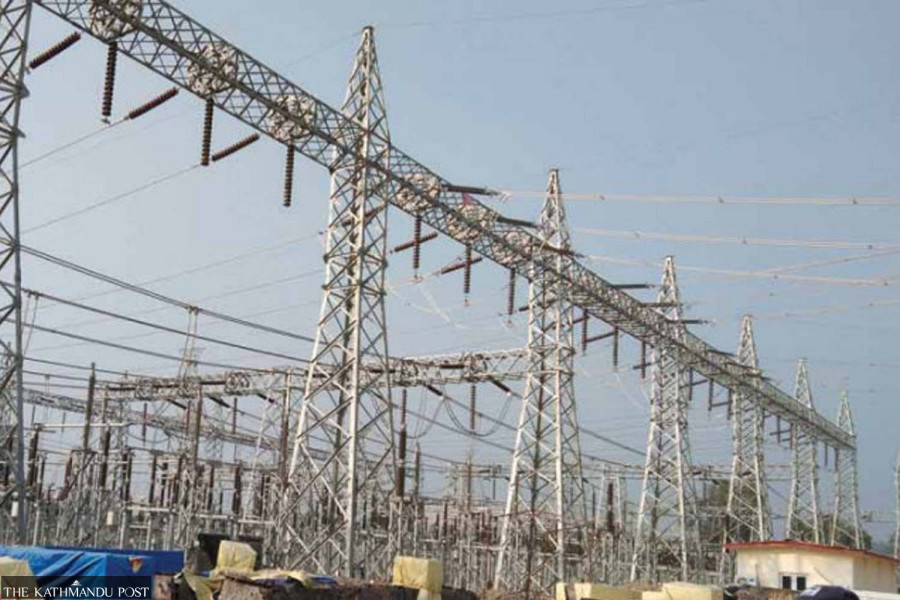National
Power shortage continues as generation slumps
NEA has been cutting electricity supply to factories in the Tarai. Also there is a transmission infrastructure handicap.
Prithvi Man Shrestha
The prolonged drought this winter has kept the water levels in the rivers lower, affecting the electricity generation in the country, Nepal Electricity Authority said.
Despite a significant increase in the total installed capacity of hydropower projects by the third quarter of the current fiscal year 2022-23, overall power production did not grow this winter forcing the country to import costly power from India.
Nepal’s installed capacity of power projects grew to 2,650MW as of early April from just over 2,200MW at the end of last fiscal year 2021-22, according to the NEA. However, energy generation at all power plants across the country at present is quite low.
“Currently, domestic production of power ranges from 700MW to 800MW,” said Suresh Bhattarai, spokesperson of the NEA. “The run-of-the-river type hydropower projects are producing 22 percent less electricity than they did during the same period last year.”
He said that prolonged drought and lack of snow melt affected power production badly. “Power production of some projects that are not based on snow-fed rivers flowing from the Himalayas has decreased by as much as 30-35 percent compared to the same period last year,” Bhattarai said.
In early May last year, the NEA had reported production of 1,300 MW of electricity. Officials at the NEA had attributed the rains in early May last year to the boost in power generation by hydropower projects. The rains last year had come as a big relief for Nepal as electricity prices in India had climbed to the roof amid rising prices of coal and petroleum products that are major input materials for producing electricity.
But Nepal became lucky as snow melting started in April, earlier than usual, which helped to increase water levels in the rivers originating from the Himalayan range.
Nepal has to import power from India during the winter while the country sells electricity to India during the summer when it has surplus power. Nepal was struggling to get supply of power from India because of high demands and low supply of power at the same time.
Because of limited power production at the moment, Nepal has been importing power from India. The state-owned power utility, NEA, said that though it has been importing power from India, it has not been able to supply the power to all parts of Nepal. The power utility body has been cutting the power supply to the industrial belt of Tarai from late January.
“We have been supplying power for around 18 hours a day in Tarai-based industrial zones,” Bhattarai said. Power cuts are minimal in factories based in eastern Nepal, but there are relatively longer in western Tarai because of poor transmission infrastructure.”
Particularly, factories and firms based in the Bara-Parsa Industrial Corridor have been suffering badly due to continuous longer load-shedding. Bhattarai said the lack of high capacity transmission lines inside the country affected the supply of power. Nepal currently does not have even a single 400kV transmission line for internal power transmission.
“Even though we can get supply of upto 600 MW from India through the Dhalkebar-Muzaffarpur transmission line, we cannot supply that power in the western belt due to lack of high capacity power line,” said Bhattarai.
Now, the NEA has been importing power from India, but it would be able to export power in just over a month. Last year, the NEA started selling power to India in early June. “We hope to resume export to India from June,” said Bhattarai.




 16.2°C Kathmandu
16.2°C Kathmandu







%20(1).jpg&w=300&height=200)






